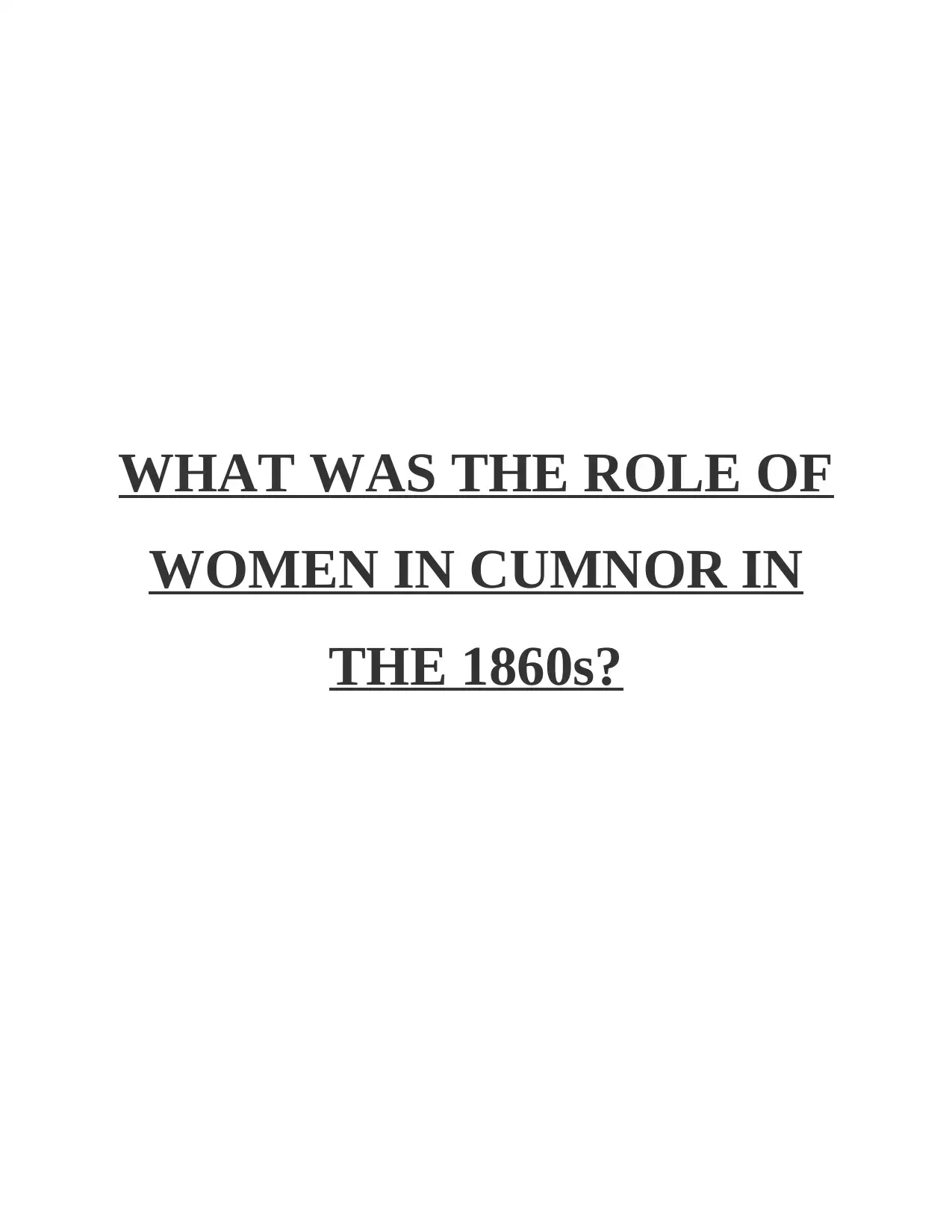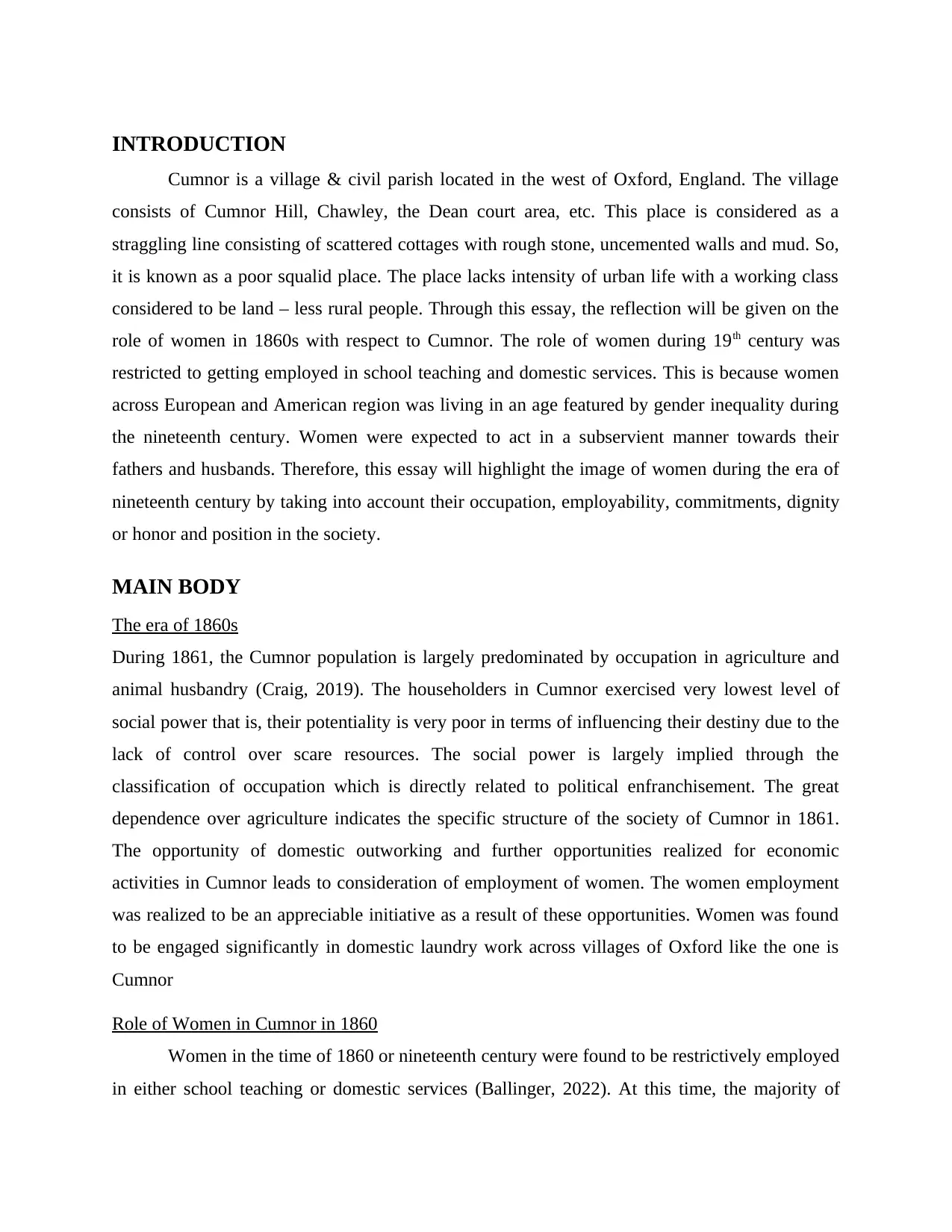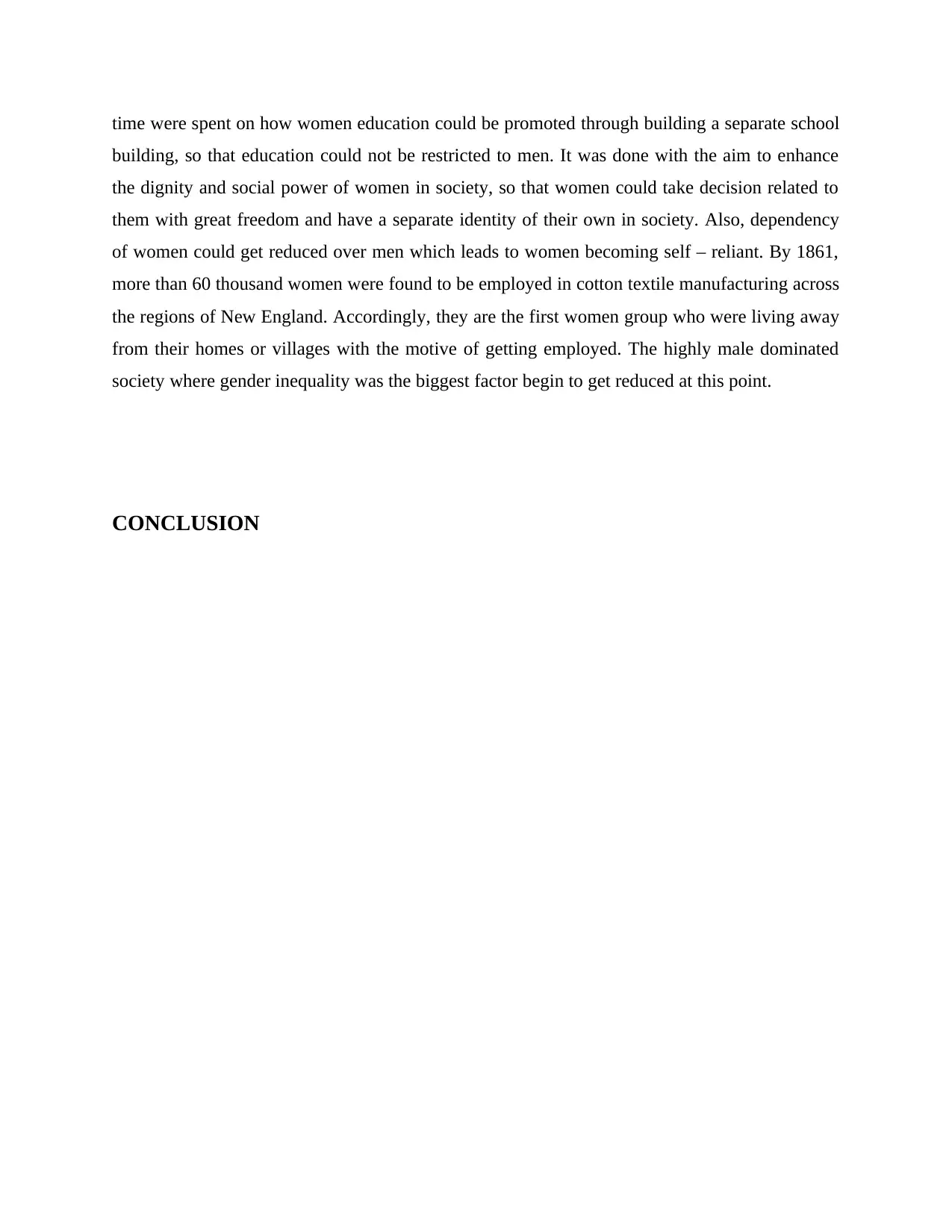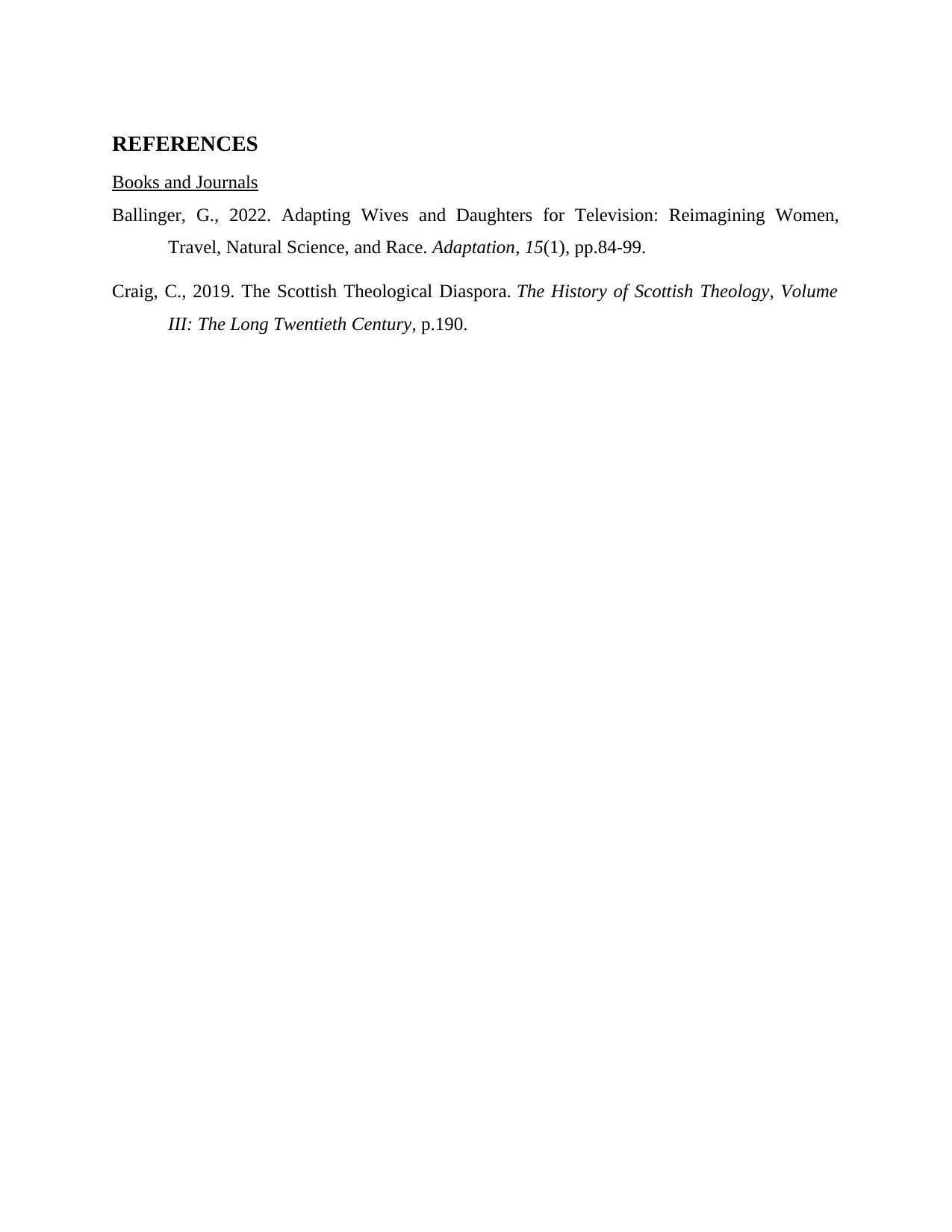A Study on the Role of Women in Cumnor, England During the 1860s
VerifiedAdded on 2023/06/09
|4
|632
|111
Essay
AI Summary
This essay examines the role of women in Cumnor, England, during the 1860s, a period characterized by significant gender inequality. It explores how women were primarily confined to occupations such as school teaching and domestic service, reflecting the limited opportunities available to them. The essay highlights the prevailing societal expectations that women should be subservient to men and the efforts to promote women's education to enhance their dignity and social power. It also touches upon the increasing number of women entering the workforce, particularly in textile manufacturing, and the gradual shift towards reducing gender inequality. The study uses references to support the findings.
1 out of 4






![[object Object]](/_next/static/media/star-bottom.7253800d.svg)